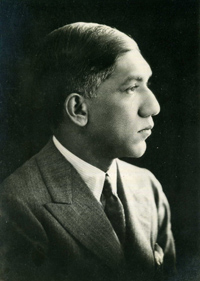 The Socio-Political Scenario in Sri Lanka was throbbing with the hum and buzz change-and the People’s desire for change, in the early 1900s. It was at that crucial juncture of our modern history that a young man, but recently down from Cambridge, Mr. D. R. Wijaywardene, made his debut as an entrepreneur and business magnate on the local scene.
The Socio-Political Scenario in Sri Lanka was throbbing with the hum and buzz change-and the People’s desire for change, in the early 1900s. It was at that crucial juncture of our modern history that a young man, but recently down from Cambridge, Mr. D. R. Wijaywardene, made his debut as an entrepreneur and business magnate on the local scene.
With the dynamism he displayed it was not surprising he decided to plunge, almost immediately onto the variegated world of Newspapers. After all, he had moved with Indian Nationalists in his University days and with other young men of vision and became convinced that one of the most powerful instruments in a freedom-struggle was the potent force of the press: the Newspaper Media. Moreover, he realized how newspapers would be the “Mirror” to reflect the surge of Nationalism sweeping through the country and their role in creating a National Identity in the socio-cultural millieu.
The Associated Newspapers of Ceylon Limited represents, therefore, the genius of this great man: a pioneer in a wholly Sri Lankan enterprise which grew under his wise guidance to stand the vicissitudes and stresses of the decades and reach its present eminence in the world of newspapers in Sri Lanka.
The first newspaper published in the island was the Government Gazette (with its more versatile format than now) in 1802. Other publications appeared but did not long survive the initial enthusiasm. A Sinhala newspaper, the “DINAMINA” published by H. S. Perera had run into financial difficulties by 1914.
This was critical year in World History; witnessing the outbreak of the first global conflict – World War 1 – but it was a ”Red-Letter” year for D.R.Wijewardene who, with his brother, D. C. Wijewardene bought the rights of the “DINAMINA” and transformed it into one of the most dynamic “dailies” in the country. In 1918, fired by this success, D. R. bought an English paper, the “Ceylonese” which had also run into financial distress. He paid Sir Ponnambalam Arunachalam, its founder, Rs.16,000/- for the paper, plant and goodwill. D. R. revived and renamed it the “DAILY NEWS”, which is now a household word in the country. Thus begun the story of what was become one of the world’s most complex trilingual publishing houses, adding masthead after masthead to its list of “dailies” and “weeklies” including the famous “Observer” already 90 years old when he acquired it. D. R. Wijewardene’s aim was to bring information –News and views – within reach of the widest possible circle of the public through his newspapers and to reflect in the pages the struggle of the people, long dominated by colonialism and make them aware of their own socio-cultural and political ethos. Smaller profit margins, perhaps, but increased sales was the result of his boldly cutting the price of his product by half.
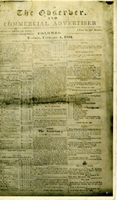
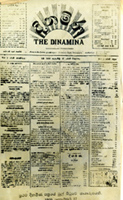
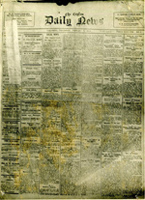

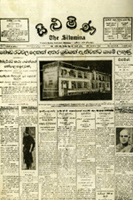
In 1926 D. R. formed the company, the Associated Newspapers of Ceylon Ltd., the structure of which he had meticulously laid, stone upon stone. By then he Had moved his papers and their premises from the old, Ill-lit, poorly ventilated bungalow in Maradana into the very heart of Colombo-Fort, where it was both prestigious and profitable to be. He had shifted to Baillie- street and had also purchased a “prime site” on the borders of the historic Beira Lake. Here he began to build what naturally came to be henceforth called and is now internationally famed as “Lake House” the heart and home of the “Lake House Group of Newspapers” where thousands of journalists In Sri Lanka cut their teeth.
In 1929 “A.N.C.L.” moved into “Lake House” where ample room for expansion remained and where provision for the up-to-date publication of his Newspapers was adequately provided. “A.N.C.L.” as he formed it was a joint stock company. Wijewardene’s interests in it were valued at Rs.600,000/-. the other family-members took, Rs.100, 000/-. In this work D. R. was assisted by Sydny Julius, head of the well-known legal firm of Julius & Creasy.
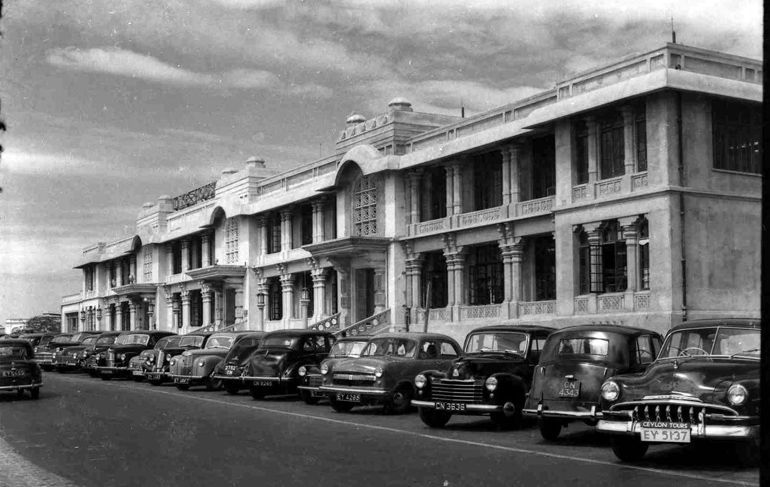 In 1930 the “SILUMINA”, now one of the largest-circulated newspapers in the Asian continent, was launched. A Family Daily appeared in 1932, making “Lake House” the First publishing house to produce three different “Dailies” in three separate languages, involving three different scripts. D.R. had the knack of selecting the “right men for the job”. To head his newspapers. He brought in a fine team of Editors. Among the “names” that glitter like lights at Lake House down the years are those of Martin Wikramasinghe, Piyasena Nissanka and Meemana Premathilleke, S. J. K. Crowther, H. A. J. Hulugalle, H. D. Janz, Jayantha Padmanabha, Denzil Peiris and many others of Asian and even International reputation are columnists and cartoonists like Aubrey Collette and Tarzee Vittachi. Regular feature writers like the late Prof. J. L. C. Rodrigo, G. J. P. Gorden, Jayantha Padmanabha to name only two, three have been unmatched in Sri Lanka. Writers like Martin Wikramasinghe and Meemana Premathileke were legends in their lifetime. Lionel Wendt Was one of the most distinguished and talented photographers of his era. S.P.Foenander created Sports History on the Sports Pages. Included at one time on the staff of Lake House (Editorial) were such remarkable personalities as Peter Keuneman, Dr. Anandatissa de Alwis and Sir Oliver Goonetilleke.
In 1930 the “SILUMINA”, now one of the largest-circulated newspapers in the Asian continent, was launched. A Family Daily appeared in 1932, making “Lake House” the First publishing house to produce three different “Dailies” in three separate languages, involving three different scripts. D.R. had the knack of selecting the “right men for the job”. To head his newspapers. He brought in a fine team of Editors. Among the “names” that glitter like lights at Lake House down the years are those of Martin Wikramasinghe, Piyasena Nissanka and Meemana Premathilleke, S. J. K. Crowther, H. A. J. Hulugalle, H. D. Janz, Jayantha Padmanabha, Denzil Peiris and many others of Asian and even International reputation are columnists and cartoonists like Aubrey Collette and Tarzee Vittachi. Regular feature writers like the late Prof. J. L. C. Rodrigo, G. J. P. Gorden, Jayantha Padmanabha to name only two, three have been unmatched in Sri Lanka. Writers like Martin Wikramasinghe and Meemana Premathileke were legends in their lifetime. Lionel Wendt Was one of the most distinguished and talented photographers of his era. S.P.Foenander created Sports History on the Sports Pages. Included at one time on the staff of Lake House (Editorial) were such remarkable personalities as Peter Keuneman, Dr. Anandatissa de Alwis and Sir Oliver Goonetilleke.
What D. R. achieved was “to make a thousand flowers bloom”. His papers gave currency and vitality to the languages, to education, to the Arts and Sciences, the religions of this multi-ethnic land. He helped to revive and restore Buddhism to its former glory, gave it relevance and significance on the New Age dawning. He spearheaded development and progress by means of his media-exposures. He created newspapers that became organs of the people’s will, of their aspirations, all of which played a singular role in the struggle for political independence.
It could be justly claimed that he succeeded in shaping the nation’s very destiny. For the newspapers he bought and revitalized or founded and launched so successfully remained distinctively his own, vehicles for his own ideas, bearing his own indelible stamp. And in all those years he worked closely with the country’s political leaders, campaigning for constitutional reforms, using the “platform” of his press. His efforts culminated in the recommendation and implementation of the Donoughmore and Soulbury commissions.
His press firmly established, his newspapers flourishing, he was there to see the dawn of that glorious day, February 4th 1948 – Freedom Day – for the people of Lanka. D. R. died on June 13, 1956. he was followed by a number of caretaker chairmen, the first of whom was L. M. D. de Silva, K. C. and later Privy Councillor. In 1962 Ranjith Wijewardene, D. R.’s younger son, took command of the company. Yet, in the tradition of its founder, the company went into bring out several new newspapers the Janatha, the Budusarana, the Mihira, the Navayugaya, the Sarasaviya, the Subasetha and the Tharunee. During the years since D. R.’s death the Editorial policies of the “Lake House Group” of “dailies” were master-minded by Esmond Wickremasinghe his son-in-law; Ranjith’s brother-in-law.
In 1973 the company was taken over under the Associated Newspapers of Ceylon Special Provisions Act No.28. Mr. A. K. Premadasa took charge as the first Government appointed Chairmen.
In 1977 Mr. R. Bodinagoda took over to pick up the trail of expansion and modernization characteristics from the time of the founder of A.N.C.L.
